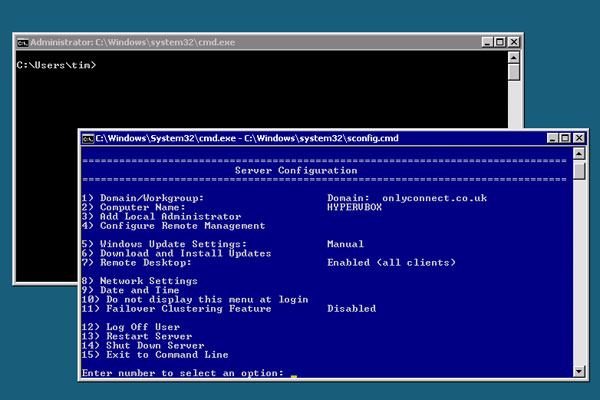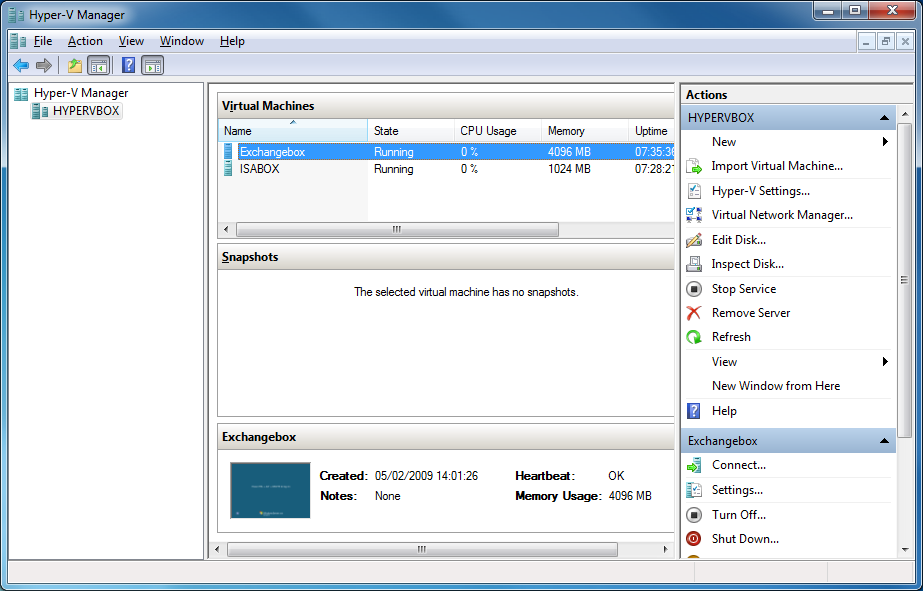Microsoft Hyper-V Server 2008 R2 review
Microsoft is determined to keep the pressure on the established virtualisation players and with Hyper-V R2 has added some crucial features. We see how it fares in this review.

Hyper-V Server 2008 R2 works well at a price that can't be beaten. Strong new features in Hyper-V Server R2 are spoilt only by lack of attention to management issues, both from the command line and with remote tools but it’s still a great deal for Windows users.
The R2 release of Hyper-V removes some of the limitations of the earlier release and introduces several important features. The biggest is host clustering and live migration. You can set up a cluster of up to 16 nodes, and have automatic failover of a VM (Virtual Machine) from one node to another in the event of a hardware failure. Another key feature is that virtual SCSI hard drives can now be added and removed without shutting down the VM.
Hyper-V supports two types of virtual hard drive. A dynamically expanding hard drive reports a large capacity to the guest operating system, but only occupies the space on the host that is actually used, whereas a fixed virtual drive occupies the same space as its capacity. Dynamic drives are more convenient, but in the first Hyper-V release performed more slowly than fixed drives. This has changed in R2 so that performance is nearly the same.

The Hyper-V Manager snap-in running remotely is the normal way to manage virtual machines.
We installed Hyper-V Server 2008 R2 on several machines, ranging from a server with two quad-core processors to a low-end server with a single Xeon. Installation of Server Core tends to be a little more complex than the full version of Windows Server, partly because it is a minority choice and most support resources presume that you have access to the full GUI. Simple tasks like checking device manager become challenging. Microsoft has provided a command-line menu with scripts for some common tasks, such as joining the computer to a domain, configuring remote management - though see below - and setting up networking; but unless you already know Server Core you will still need to work out new techniques for familiar tasks.
Get the ITPro daily newsletter
Sign up today and you will receive a free copy of our Future Focus 2025 report - the leading guidance on AI, cybersecurity and other IT challenges as per 700+ senior executives
-
 Cleo attack victim list grows as Hertz confirms customer data stolen – and security experts say it won't be the last
Cleo attack victim list grows as Hertz confirms customer data stolen – and security experts say it won't be the lastNews Hertz has confirmed it suffered a data breach as a result of the Cleo zero-day vulnerability in late 2024, with the car rental giant warning that customer data was stolen.
By Ross Kelly Published
-
 Women show more team spirit when it comes to cybersecurity, yet they're still missing out on opportunities
Women show more team spirit when it comes to cybersecurity, yet they're still missing out on opportunitiesNews While they're more likely to believe that responsibility should be shared, women are less likely to get the necessary training
By Emma Woollacott Published
-
 OpenAI wants developers using its new GPT-4.1 models – but how do they compare to Claude and Gemini on coding tasks?
OpenAI wants developers using its new GPT-4.1 models – but how do they compare to Claude and Gemini on coding tasks?News OpenAI says its GPT-4.1 model family offers sizable improvements for coding, but tests show competitors still outperform it in key areas.
By Ross Kelly Published